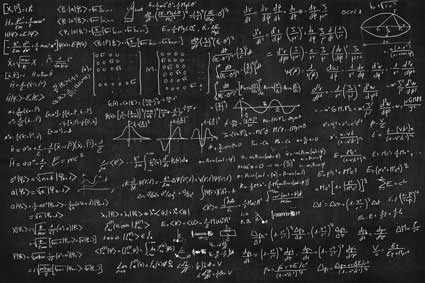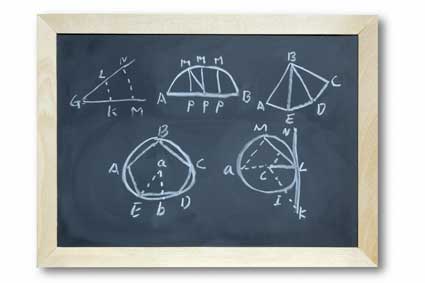?
Essentially, with our expanded capabilities has come an increased need for new forms of energy; and this from may be nuclear power or alternative energy sources such as fossil fuels or hybrid power.
A. Physics. Definition
When learning about and discussing physics, we focus heavily on energy, the core element of the science. To better understand this connection, it helps to refer to a solid working definition of physics.
Physics. The science in which matter and energy are studied both separately and in combination with one another.
And a more detailed working definition of physics may be: The science of nature, or that which pertains to natural objects, which deals with the laws and properties of matter and the forces which act upon them. Quite often, physics concentrates upon the forces having an impact upon matter, that is, gravitation, heat, light, magnetism, electricity, and others.
B. Physics. Orientation
Because physics utilizes elements of other branches of sciences, biology and chemistry for example, it has the reputation of being more complicated than other sciences.
Physics, as opposed to natural philosophy (with which it was grouped until the 19th century), relies upon scientific methods in order to describe the natural world.
To understand the fundamental principles of the universe, physics utilizes many workings from the other natural sciences. Because of this overlap, phenomena studied in physics (conservation of energy for example) are common to all material systems. The specific ways in which they apply to energy (hence, physics) are often referred to as the "laws of physics."
Because each of the other natural sciences biology, chemistry, geology, material science, medicine, engineering, and others, work with systems which adhere to the laws of physics, physics is often referred to as the "fundamental science."
For an example of how the laws of physics apply to all of the other sciences, consider that chemistry, the science of matter which studies atoms and molecules, complies with the theories of quantum mechanics, thermodynamics, and electromagnetism in order to produce chemical compounds.
C. Physics and Mathematics
As a whole, physics is closely related to mathematics, for it provides the logical structure in which physical laws may be formulated and their predictions quantified. A great many of physics' definitions, models, and theories are expressed using mathematical symbols and formulas.
The central difference between physics and mathematics is that ultimately physics is concerned with descriptions of the material world whereas mathematics is focused on abstract logical patterns that may extend beyond the real world.
Because physics concentrates on the material world, it tests its theories through the process known as observation or experimentation. In theory, it may seem relatively easier to detect where physics leaves off and mathematics picks up. However, in reality, such a clean-cut distinction does not always exist. Hence, the gray areas in between physics and mathematics tend be called "mathematical physics."
Both engineering and technology also have ties to physics. For instance, electrical engineering studies the practical application of electromagnetism. That is why you will quite often find physics to be a component in the building of bridges, or in the creation of electronic equipment, nuclear weaponry, lasers, barometers, and other valuable measurement devices.
D. Physics. Range of Fields
While there are no definitive answers as to whether or not physics is more complex than other sciences, it is safe to say that physics has decidedly more branches, both traditional and modern.
Take for example the range of traditional subdivisions of physics that exist: acoustics, optics, mechanics, thermodynamics, and electromagnetism. And then there are those still considered to be modern extensions: atomic and nuclear physics, cryogenics, solid-state physics, particle physics, and plasma physics.
Below is a list, by no means comprehensive, of the dizzying variety of disciplines that exist within the science of physics:
- Acoustics. Study of sound and sound waves.
- Astronomy. Study of space.
- Astrophysics. Study of the physical properties of objects in space.
- Atomic Physics. Study of atoms, specifically the electron properties of the atom.
- Biophysics. Study of physics in living systems.
- Chaos. Study of systems with strong sensitivity to initial conditions, so that a slight change at the beginning quickly becomes major changes in the system.
- Chemical Physics. Study of physics in chemical systems.
- Computational Physics. Application of numerical methods to solve physical problems for which a quantitative theory already exists.
- Cosmology. Study of the universe as a whole, including its origins and evolution.
- Cryophysics, Cryogenics, and Low Temperature Physics. Study of physical properties in low temperature situations, far below the freezing point of water.
- Crystallography. Study of crystals and crystalline structures.
- Electromagnetism. Study of electrical and magnetic fields, which are two aspects of the same phenomenon.
- Electronics. Study of the flow of electrons, generally in a circuit.
- Fluid Dynamics and Fluid Mechanics. Study of the physical properties of "fluids," specifically defined in this case to be liquids and gases.
- Geophysics. Study of the physical properties of the Earth.
- High Energy Physics. Study of physics in extremely high energy systems, generally within particle physics.
- High Pressure Physics. Study of physics in extremely high pressure systems, generally related to fluid dynamics.
- Laser Physics. Study of the physical properties of lasers.
- Mathematical Physics. Discipline in which rigorous mathematical methods are applied to solving problems related to physics.
- Mechanics. Study of the motion of bodies in a frame of reference.
- Meteorology and Weather Physics. Physics of weather.
- Molecular Physics. Study of physical properties of molecules.
- Nanotechnology. Science of building circuits and machines from single molecules and atoms.
- Nuclear Physics. Study of the physical properties of the atomic nucleus.
- Optics and Light Physics. Study of the physical properties of light.
- Particle Physics. Study of fundamental particles and the forces of their interaction.
- Plasma Physics. Study of matter in the plasma phase.
- Quantum Electrodynamics. Study of how electrons and photons interact at the quantum mechanical level.
- Quantum Mechanics and Quantum Physics. Study of science where the smallest discrete values, or quanta, of matter and energy become relevant.
- Quantum Optics. Application of quantum physics to light.
- Quantum Field Theory. Application of quantum physics to fields, including the fundamental forces of the universe.
- Quantum Gravity. Application of quantum physics to gravity and the unification of gravity with the other fundamental particle interactions.
- Relativity. Study of systems displaying the properties of Einstein's theory of relativity, which generally involves moving at speeds very close to the speed of light.
- Statistical Mechanics. Study of large systems by statistically expanding the knowledge of smaller systems.
- String Theory and Superstring Theory. Study of the theory that all fundamental particles are vibrations of one-dimensional strings of energy, in a higher-dimensional universe.
- Thermodynamics. Physics of heat.
The reason so many subdivisions have evolved is that physics, as a whole, presents such a broad area of study. For scientists to perform meaningful research and studies, they must reduce the scope of their focus. By narrowing their field of study, they avoid becoming overwhelmed by the magnitude of knowledge and data that exists within the entire natural (physical) world.
E. Methods of Energy Production
Energy and work (energy as defined as the ability to do work) occupy an important part of our ordinary lives, and are among the most important topics in physics. Work, in terms of a physics related definition, has quite a different meaning than the type of work about which we normally think. In physics, work is performed only when an object is moved in the direction of an applied force.
Energy in physics is defined as the ability to do work. Doesn't this seem logical? For the more energy you have, the more work you can accomplish and the more activities you can engage in. In terms of a formula used, work is the force exerted multiplied by the distance moved, or W=Fxd.
F. History of Physics
a. Prehistoric Era
Up until the Industrial Revolution during the late 1800s, humans had a limited call for energy. With fire for cooking, heating, and for safety purposes, along with animals for strength and transportation, humans really had the majority of their basic needs covered.
In addition to fire and animals, humans were also using wind as energy. This knowledge was acquired around 1200 BC in Polynesia, where people learned to use wind as a method for propelling their boats with the appendage known as a "sail."
Approximately 5000 years ago, the Chinese were the first to use magnetic energy. They relied upon the pull of magnetic iron objects to guide navigators and, thanks to the Earth's magnetic field, point them in the direction of north.
About 2500 years ago, the Greek philosopher Thales was credited with discovering electrical energy. By rubbing fur against a piece of amber, Thales found that dust and other particles clung to the amber with what is known as an electrostatic force.
And in 1000 BC, because it burned slower and longer than wood and provided more heat, the Chinese began to use coal as a source of fuel. Found to be a superior source of energy, this fuel was introduced to the Western World by Marco Polo in 1275, and was used for countless centuries thereafter.
b. 17th Century
During the 1600s, the Netherlands discovered reserves of coal and began providing it to countries throughout Europe. In the 1700s England discovered its own source of coal and became both a manufacturer and distributor to neighboring countries. Within a short while, England broadened its distribution route, becoming the world's largest producer and supplier. Within this same time period, Europeans discovered solar heat had the ability to grow plants indoors during cold weather months.
c. 18th Century
During the 1700s, due to diminished forested territories, England's primary source of fuel was coal. Further contributing to the demand for coal at this time was the invention of the steam engine. Devised to pump water out of coal mines, later models of the steam engine sported an increased number of cylinders and a more efficient method for burning the coal.
Eventually, the newly improved steam engine served as the primary impetus for the Industrial Revolution.
d. 19th Century
During the 19th century, the Industrial Revolution was well under way. Beginning in England and moving throughout Europe, North America, and the rest of the world, the Revolution was marked by mass production, the by-product of newly introduced machinery. With the advent of such flourishing mechanized activity came an unprecedented need for additional sources of energy.
Along with the steam engine, the first steamboat debuted in 1807 and the first steam locomotive in 1804. Again, with new technology came an increased need for productive, high-capacity engines, and more inexpensive forms of energy.
During this era, scientists were aware that energy supplies were limited and began to seek out alternative sources, for example, solar energy, hydroelectric energy, and geothermal energy. Not only were they worried about coal shortages, but they were also concerned about the residual effects (exhaust fumes, and so on) caused by coal's combustible output (fossil fuels).
During the mid-1800s, alternative energy sources were the focus of a great deal of study, research, and experimentation. Mouchout developed solar energy in 1860. Although Charles Tellier, John Ericsson, Henry E. Willsie, Eneas, et al., all made notable improvements in the solar engine; it failed to catch on commercially because coal was widely available and significantly less expensive.
In the 19th century, additional energy related highlights included:
- Construction of small hydroelectric power plants.
- Windmills developed to produce electric power.
- Geothermal energy used to heat up houses and, by the end of the century, capable of contributing to the production of electricity.
- Crude petroleum oil drilled out of the ground in Titusville, Pennsylvania.
- Internal combustion engines mounted in automobiles.
- Petroleum gradually began to dominate coal in the energy industry.
- French inventor Lenoir invented an internal combustion engine that used gasoline as fuel.
- German inventors Daimler and Benz invented the first automobile by mounting the engine on a carriage.
- Subsequently, Henry Ford later mass produced automobiles enabling the car to become a common means of transportation.
- The Wright brothers invented the first airplane with a gasoline engine, and, thus, ushered in an era of faster and cheaper transportation.
Modern Times
In modern times, some of the same energy sources which scientists had explored during the 19th century, like solar, wind, hydroelectric, biomass, and geothermal energy, are now being revisited as possible alternative options. Another contemporary power source is nuclear energy. Though widely used, many scientists are concerned about the fall out associated with the residual effects of nuclear energy, one of which includes the effect of radioactivity upon the environment.
Due to some misuses and exploitation, the world has depleted many of its long established supplies of energy sources. In the midst of these increasingly dire circumstances, scientists continue to seek out alternative forms of energy. Their primary requirements are to find energy sources that are not harmful to the environment, are accessible, inexpensive, and available in mass quantities.






























